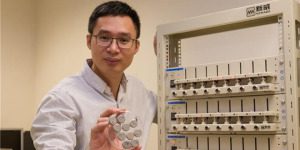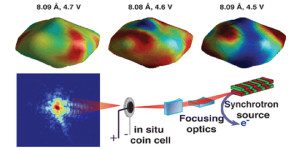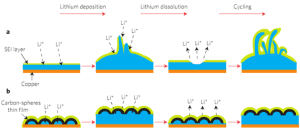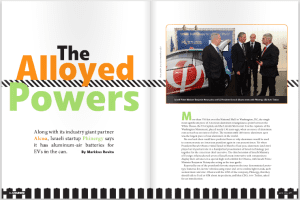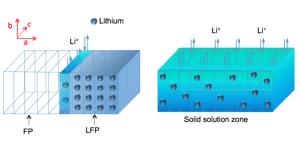The latest battery breakthrough comes from Nanyang Technological University (NTU Singapore), where researchers have developed a lithium-ion battery that they say can be recharged up to 70 per cent in only two minutes, and can endure more than 10,000 charging cycles. NTU Singapore’s scientists replaced the traditional graphite anode with a new gel material made… Read more »
Search Results Found For: "NANO ONE"
Fraunhofer Institute presents November workshop on lithium-sulfur batteries
The Fraunhofer Institute will hold its third annual workshop on lithium-sulfur batteries in Dresden, Germany, on November 12 and 13. Lithium-sulfur is a leading contender for the battery chemistry of the future, and Fraunhofer believes that novel materials such as nanostructured carbon/sulfur composite cathodes, solid electrolytes and alloy-based anodes will significantly enhance performance. Dr Oliver… Read more »
New X-ray technique sheds light on why Li-ion batteries degrade
Researchers at Argonne National Laboratory are using a new imaging technique to learn more about the process that causes lithium-ion batteries to degrade over time. Using coherent X-ray diffractive imaging at the DOE’s Advanced Photon Source facility, a team of researchers mapped the three-dimensional strain in individual nanoparticles within the electrodes of operating batteries. In… Read more »
New study: Rapid charging doesn’t damage lithium-ion batteries as much as thought
A new study has found that fast charging and discharging of lithium-ion batteries may not be as damaging as most researchers believe. The results of the study, Current-induced Transition from Particle-by-particle to Concurrent Intercalation in Phase-separating Battery Electrodes, published in Nature Materials, challenge the conventional wisdom that fast charging necessarily shortens battery life. The authors… Read more »
Brookhaven scientists gain new insight into why fast charging reduces battery capacity
Using a new method to track the electrochemical reactions in a battery, scientists at the DOE’s Brookhaven National Laboratory have gained new insight into why fast charging inhibits performance. The results, published in Nature Communications, could help battery makers to optimize materials for faster-charging batteries. “Our work was focused on developing a method to track… Read more »
Stanford team develops stable lithium anode
Are the knights of nanotechnology closing in on the Grail at last? A team of researchers at Stanford University claim that they are, and have chronicled their deeds in the journal Nature Nanotechnology. The valiant engineers report that they have designed a pure lithium anode. “Of all the materials that one might use in an… Read more »
Phinergy CEO on aluminum-air batteries and 1,000-mile range-extended EVs
Along with its industry giant partner Alcoa, Israeli startup Phinergy says it has aluminum-air batteries for EVs in the can. More than 550 feet over the National Mall in Washington, DC, the single most significant piece of American aluminum triangulates a point between the White House, the US Capitol, and the Lincoln Memorial. It is… Read more »
Lithium iron phosphate electrodes reveal exotic state of matter to MIT researchers
Transmission electron microscopy has allowed MIT researchers to directly observe a lithium iron phosphate (LiFePO4) electrode during charging, and they found that, just as suspected, a solid-solution zone (SSZ) forms at the boundary between lithium-rich and lithium-depleted areas, as lithium ions are pulled out of the electrode. The new findings, which appear in a paper… Read more »
Dual-carbon battery claims to be longer-lasting and safer than Li-ion
Seldom does a week go by without an announcement of a promising new battery technology – but the road from the laboratory to the auto dealership is a long one, and there’s no knowing which of today’s breakthroughs might enable tomorrow’s mass-market EVs. This week’s news, from Power Japan Plus, almost sounds too good to… Read more »
Silicon rally: EnerG2’s new silicon battery anode material
It seems that every time the hottest new smartphone or tablet comes out, one of the biggest points of contention among users is its battery life. The demands put on the batteries run them down faster than users would like, and the OEMs can’t simply increase the batteries’ size while still hitting their targets for… Read more »




